Honor may be Huawei’s e-commerce brand offering handsets at a cheaper price than Huawei does itself, but the company is making its own waves with handsets that aim to change the status quo.
In August last year, we had the Honor 6, a handset that aimed to offer a £500 5-inch smartphone experience at a Nexus-like price and now we have the Honor 6 Plus, which aims to bring the phablet experience at almost half the price.
Huawei itself has the Ascend Mate 7 – with rumours of the Huawei Mate 8 launching later this year – but is the Honor 6 Plus the better phablet? As the saying often goes, you get what you pay for - but does it apply in this case and will spending more get you a better phablet? Let’s take a closer look.
Specifications
The Honor 6 Plus features a premium specs list that you might expect of a £500+ smartphone but at a much lower price. The key specs include:
- Dimensions: 150.5 x 75.7 x 7.5 mm
- Weight: 165 grams
- Screen: 5.5-inch IPS, Full HD resolution (~401ppi pixel density)
- OS: Android 4.4.2 KitKat, Emotion UI v3.0
- CPU: Kirin 925, octa-core (4 x 1.8GHz, 4 x 1.3GHz)
- Memory: 3GB RAM, 16GB/32GB interal storage, microSD expansion (up to 128GB)
- Camera: Dual 8MP, LED flash, autofocus, HDR, Panorama, Wide Aperture
- Video: 1080p@30fps
- Front Camera: 8MP, 1080p@30fps
- Connectivity: Bluetooth v4.0, Wi-Fi n/ac, NFC, IR blaster, LTE Cat 6 (300Mbps down, 50Mbps up)
- Battery: 3600 mAh non-removable

Design
The Honor 6 Plus looks like other Huawei devices and shares many traits with the Huawei P8, including slim bezels on either side of the display to create a display that is a pleasure to use. The metal edges and the glass back combination may not be for everyone but the handset is actually nice to hold in the hand; it's worth noting that the glass back does make the handset somewhat slippery though.
The handset features a large 5.5 inch Full HD display that offers 401 pixels per inch density and incidentally, on paper, it’s identical to the Apple iPhone 6 Plus. The IPS display is surprisingly good for a 1080p panel and offers warm, vibrant colours with deep blacks; the only disappointing aspect of the display is the sunlight legibility, which could do with a little work.

The right side of the phablet houses the SIM slot, microSD card tray, power key and volume buttons. The two trays are accessible using the SIM removal tool in the box while the buttons themselves are thin and long but offer surprisingly good tactile feedback. On the left, the handset is free of any ports or keys.

At the bottom, the 6 Plus has a microUSB v2.0 port and the included cable is easy to insert in the port, even in darkness. Up top, there’s the 3.5mm headphone jack and an IR blaster; the position of the headphone jack at the top can be a little awkward while the IR blaster is a feature that only appears on Huawei’s premium devices.

The back of the Honor 6 Plus is interesting for two reasons; first, under the glass rear is a stylish dotted pattern and secondly, the dual camera setup which aims to set the world alight. We’ve got the metallic gold handset here, which is only available in and around Asia, and on the gold handset, the design is more prevalent. With the black version, you won’t really be able to see the pattern but it is visible in the right lighting.
With the camera, Huawei has taken inspiration from other attempts to offer multiple cameras but executed it in a better way. Instead of the 4MP UltraPixel and 2MP duo camera set up on the One M8, we’ve got two eight megapixel cameras, which combine to take 13MP images with sharp detail and focus.

A lucky Chinese number is 888 and this has definitely inspired the design of the 6 Plus, with the 8MP front snapper rounding off the lucky number. The front shooter can capture Full HD video and comes with Huawei’s Beauty Level to accentuate your facial features. We’ll go into this in more detail down below.
The Honor 6 Plus will look familiar to most people as it seems to be a design inspired by several other devices. From the style of the iPhone to the build of Huawei’s own devices, the design is unique but does feel a little cheap.
What about the rest of the package? Does the camera live up to its special billing and do Honor devices come with a different version of Huawei’s Emotion UI software? Let’s find out.


![]()
Software
Huawei’s Emotion UI 3.0 comes preloaded on the handset and if you’ve used a Huawei device before, you’ll find the software very familiar. The Chinese version of the Honor 6 Plus doesn’t come with Google services preloaded but for customers in most other markets, you’ll get Huawei’s interface coupled with the full Google suite of applications and services.
The performance of the Google Play suite on the handset is somewhat hit-and-miss: the services work flawlessly 99% of the time, but every so often, applications such as the Play Store and Play Movies & TV stop working. When this happens, a simple restart usually fixes this but it can be a tad frustrating, especially when you're in the middle of downloading an app or watching a movie.


![]()
The key part of Emotion UI that is continuously frustrating is the lack of app drawer with Huawei instead preferring to emulate iOS with apps on multiple home screens and folders.
The other elements of Emotion UI haven’t changed an awful lot since the Ascend Mate 7 and the performance is as smooth as always. Emotion UI makes some large-scale radical changes to the Android OS and is very much love-it-or-hate-it. I personally find it usable and have adjusted to it pretty quick but I would recommend trying the software first – it’ll be on show at any Three UK store, for example – before taking the plunge.

Camera
One of the key selling points of the Honor 6 Plus is the unique 888 camera setup with two rear 8MP combining to offer some interesting defocus effects. The two rear cameras allow you to place the handset on a steady surface, capture an entire scene and then change the focal point of the image in post-processing.


Both images above were taken from the same shot, and the ability to change aperture means you can change the depth of field of the image and the focal point after you've taken in. In the first image, we've used the Xbox as the focal point, but in the second image, the bottle becomes the focal point with a shallower depth of field blurring out the rest of the scene.
The dual camera setup is a nice touch and definitely makes for interesting photos, and the wide aperture mode can also be useful when shooting in dark conditions. Of the two images below, the first was in normal mode and the second with wide aperture; although there's a fair amount of noise in the wide aperture mode, it does help capture more light in the image.


What about when you just want to take an image without worrying about different options and settings? Here’s some camera samples captured with all settings on auto on the Honor 6 Plus:


From the rear cameras to the front camera, where the 8MP sensor takes impressive photos. Along with the selfie-cam, there’s Full HD video and Huawei’s own Beauty Level feature which helps accentuate your facial features and makes for better looking selfies.

Unlike other smartphones, the Honor 6 Plus tops out at Full HD video but this limitation isn’t exactly a bad thing as it offers clear colours and vibrant audio. Here’s a Full HD sample captured on the Honor 6 Plus at the UK launch of the handset.
Overall, the camera is great for every day shots and in low-light, it offers impressive performance. You’ll find more camera samples in the gallery at the bottom – see if you can tell which were captured with the front and the back cameras as they’ve very similar.

Performance
When buying a handset with a mid-range price, you’ll often find that the internals are an area where manufacturers make concessions. Mid-range versions of flagships have often had reduced processors, lower RAM and inferior graphics, which all result in a vastly different – and reduced – experience.
With the Honor 6 Plus, Huawei opted for the alternative; flagship specs with a mid-range price. Under the hood, the handset is powered by Huawei’s own octa-core Kirin 925 chipset – with four cores clocked at 1.8GHz and four clocked at 1.3GHz – along with 3GB RAM, 32GB internal storage and a microSD card to expand this further.


On paper, the specs are akin to a premium smartphone and in person, they don’t disappoint. There’s certainly not the bells and whistles found on the latest processors like the Snapdragon 810 but this is actually a good thing; rather than pick the latest processor, Huawei opted to use one that it already had available and the result is no surprising performance issues.
In practice, the Honor 6 Plus shows no signs of lags or stutter until you have twelve or more apps running. Even then, the noticeable issues are minimal and closing all running apps restores the fluid performance.
Benchmarks
How do the internals of the Honor 6 Plus compared to the competition? In a bid to answer this, we put Honor’s phablet through its paces with the help of three benchmarking applications: AnTuTu 5, GeekBench 3 and 3D Mark Ice Storm Unlimited.


In the AnTuTu benchmark – which tests the CPU, RAM and Graphics – the Honor 6 Plus achieved a score of 44581, which ranks higher than the Ascend Mate 7 and HTC One M8 but lower than the HTC One M9, Galaxy Note 4 and Galaxy S6 Edge.

Moving onto 3DMark - which puts the graphical capabilities of the handset to the test - the Galaxy S6 Edge achieved a score of 13622. The score is quite interesting as according to the benchmarking service, the Honor 6 Plus has a ranked score of 13728 which is just 1 higher than the Ascend Mate 7 on 13727. The score is significantly lower than most rival devices at the same price and rival Chinese manufacturer Xiaomi’s Mi Note heavily outperforms the Honor 6 Plus with its score of 20241.



Another popular benchmarking service to test a handset with is Geekbench, which tests both an individual core, and all the cores together, of the smartphone’s processor. In this test, the Honor 6 Plus scored 900 in the single-core test and 3166 in the multi-core test.
Dual SIM
One of my favourite things about the Honor 6 Plus is the dual SIM capability; like the flagship Ascend Mate 7, the microSD card slot on the 6 Plus doubles up as a secondary SIM slot.

You can put either a microSD card (up to 128GB in size) or a nano SIM in the slot and if you opt to use a second SIM, the SIM management settings menu allows you to set the default device for calls, texts and data. Personally, 32GB storage is plentiful but if you need expandable storage, it's worth noting that you can use the second slot with either a SIM card or a microSD card but not both.
Overall, the Honor 6 Plus performance is superb with very little to complain about. Like most big devices, the Honor 6 Plus has a monstrous battery but how long can it last?
Battery Life
The key selling point for large screen phones is the inevitably large battery that accompanies the handset and the Honor 6 Plus is no different. Powered by a 3600mAh battery, which is large compared to most devices, the handset continues the trend of the Mate 7 by offering a battery that can span multiple days on a single charge.

During a couple of weeks’ worth of testing, the battery was nothing short of outstanding. On average, the Honor 6 Plus lasted four and a half days with low usage, two and a half days with medium usage and at least an entire day with heavy usage. By any standard, the battery life is simply superb and Huawei have clearly brought the two-day battery life from the Ascend Mate 7 to the mid-range market with the Honor 6 Plus.
Conclusion
At a price of £299 (approx. $450), the Honor 6 Plus is probably the best phone in the mid-range. It offers the specifications and experience of the premium Ascend Mate 7 but swaps the metal build for plastic and glass at a 40% reduction in price.
The Honor 6 set a trend for Honor devices by offering incredible value for money and the Honor 6 Plus does just this. The handset comes with three-years warranty in Western Europe and the overall package is simply outstanding.
The software may be a bit hit-and-miss but the internals, battery life and camera are all fantastic. Simply put, the Honor 6 Plus is the best phone you’ve probably never heard of.


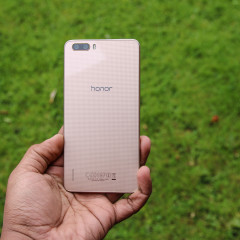
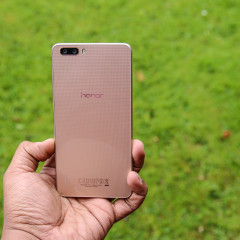
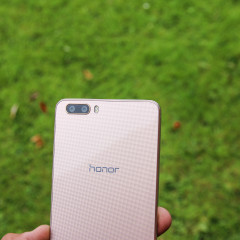
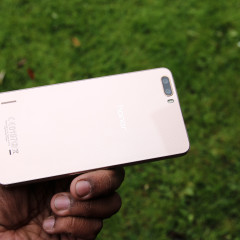


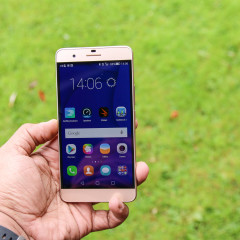



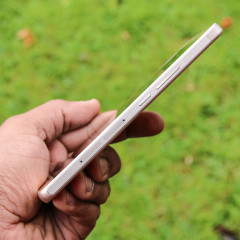
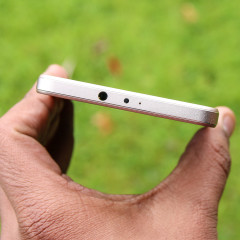
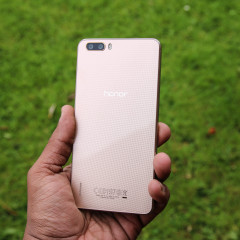


























9 Comments - Add comment